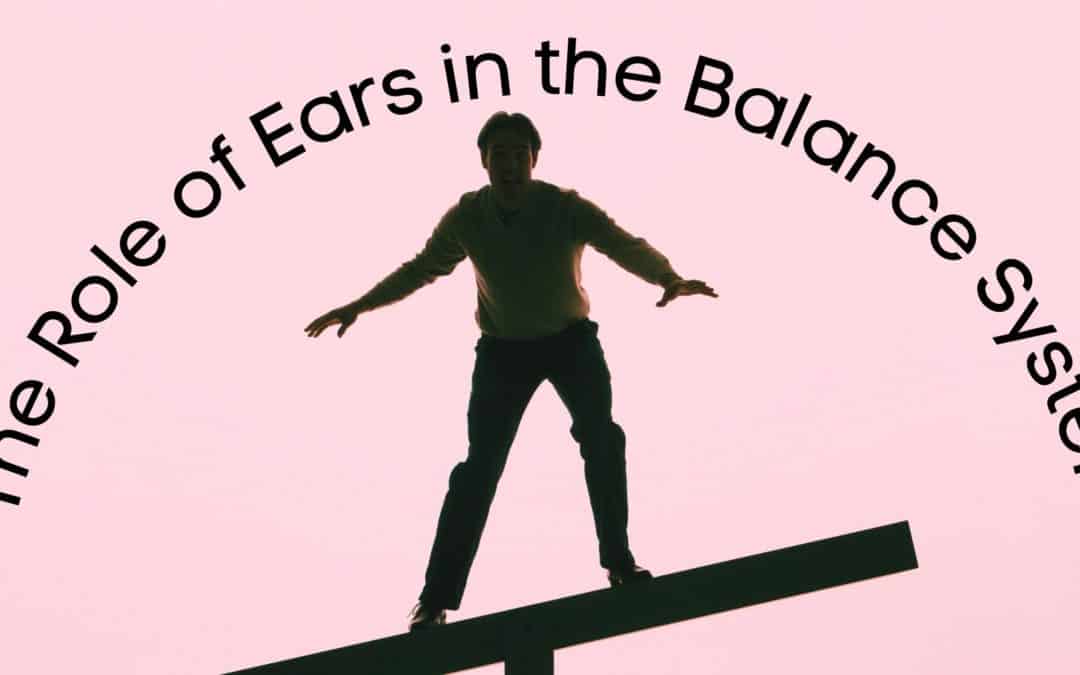Did you know that the ears play a major role in how we maintain our balance? The vestibular system is the sensory system that manages balance and motion. Fun fact: it is housed in the inner ear. Various factors can affect this system, resulting in balance disorders that can be effectively treated and managed.
What is the Balance System?
The vestibular system is what sends the brain information about balance, motion, head position, and spatial awareness. Unlike the other senses, we have it also relies on information from other senses including visual inputs. The vestibular system consists of a network of canals, otolith organs, and the vestibulocochlear nerve. The semicircular canals are made of three loops or tubes that each detect a specific motion:
- First canal: nodding up and down motions
- Second canal: side to side movements
- Third canal: tilting left and right movements
These semicircular canals are filled with fluid and hair cells which are the sensory receptors of the vestibular system. These sensory cells send information about movement and stability to the brain – via the vestibulocochlear nerve. This includes information about head movement and your body’s position in relation to gravity. It also incorporates information received from your visual sense as well as from the muscles and joints to maintain balance. When this complex system is disrupted or damaged, it can result in issues with steadiness. Conditions related to the inner ear are common causes of balance disorders.
Balance Disorders
According to the National Institutes of Health, 8 million people experience chronic balance issues. A balance disorder is a diagnosed medical condition that describes a reduced capacity to maintain balance and/or also the experience of vertigo. Vertigo is the sensation that the environment around you is spinning and these dizzy spells can be experienced intermittently or chronically. Various factors can contribute to the development of a balance disorder including the following common causes:
- Inner ear disorders: Meniere’s disease, benign paroxysmal positional vertigo (BPPV), vestibular neuronitis, labyrinthitis
- Hearing loss
- Head or neck injuries
- Viral or bacterial infections
- Blood circulation issues like high or low blood pressure
- Medical conditions like Alzheimer’s and multiple sclerosis
Common symptoms produced by balance disorders include:
- Dizziness, vertigo
- Falling or the sense that you are going to fall
- Feeling faint or lightheaded
- Blurred vision
- Headaches
- Motion sickness, nausea
- Confusion or disorientation
Symptoms related to balance disorders can come and go or be experienced chronically which can take a toll on how one feels daily.
Hearing Loss and the Balance System
Hearing loss and balance disorders can occur simultaneously but one does not necessarily cause the other. Both the hearing system and vestibular system are in the inner ear and this proximity can result in one impacting the other. There are inner ear disorders that can contribute to both hearing loss and balance issues including Meniere’s disease and labyrinthitis. Meniere’s disease results from a buildup of fluid in the inner ear. This can create pressure that produces a hearing loss, tinnitus, and balance issues. Labyrinthitis is an infection in the inner ear that causes inflammation and this inflammation, similarly, can impact hearing and balance.
Treating Balance Disorders
To diagnose balance disorders, your doctor may refer you to specialists that work with ear-related conditions. This can include an otolaryngologist, also referred to as an ENT doctor. ENT doctors specialize in assessing, treating, and managing conditions related to the ears, nose, and throat. They may use different tests to establish the underlying cause of producing balance issues. This can include hearing, blood, and imaging tests in addition to posturography which tests posture. Treatment for balance disorders could include:
- Medications: if the underlying cause is an upper respiratory infection or bacterial infection, antibiotics may be prescribed. There are also specific medications used to treat inner ear disorders like Meniere’s disease.
- Vestibular Rehabilitation Therapy (VRT): this is a type of therapy that focuses on exercises that perform specific body, eyes, and head movements without triggering dizziness or vertigo. For example, standing up with ease and comfort.
- Canalith repositioning: this intervention is used to treat BPPV which is caused when calcium crystals in the otolith organs (part of the vestibular system) become dislodged. This therapy involves performing head exercises that are designed to reposition these crystals.
Our practice provides a range of services including assessing and treating balance disorders. If you have experienced any related symptoms, contact us to schedule an appointment!

